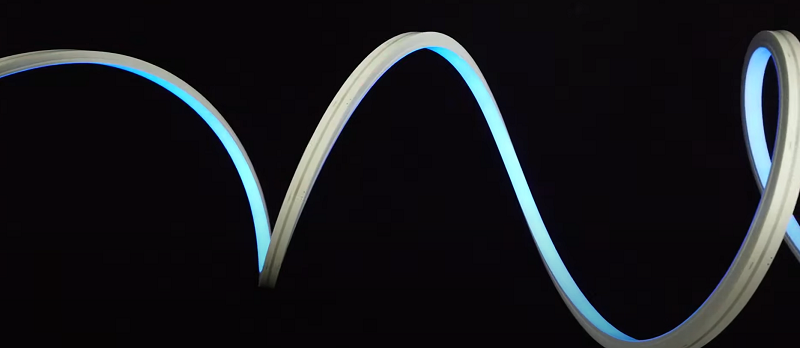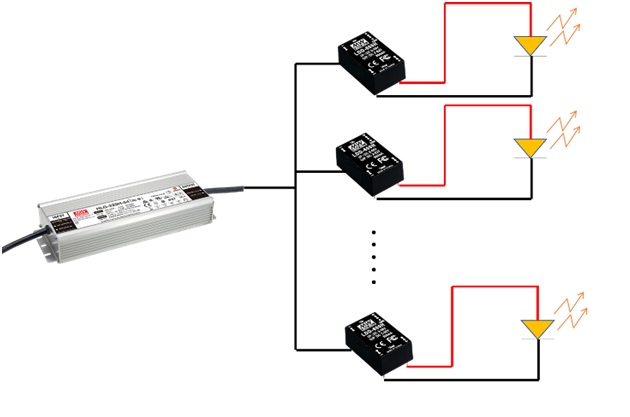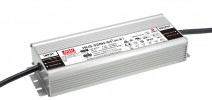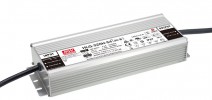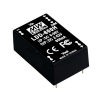How to design a LED lighting application (section 2)
Published : 06/26/2020 09:18:32
In the previous article we highlighted the possible incompatibilities between power supplies and converters. We will now focus our attention on the main situations in which installers can find themselves, thus identifying the relative solutions for a correct startup of LED modules.
1st situation: CV power supply output voltage not running in the operating range
The following image illustrates a typical installation where each LDD-1000H converter is associated with a strip LED or a neon flex LED. Assume LED is 9V, 1A, 30 of such LED tubes take 270W. If 24V input is indicated on the tubes, we might select HLG-320H-24 in this case, for example.
La specifica HLG-320H-24 mostra che la potenza massima in uscita è 320.16W e la corrente in uscita di 13.34A. Apparentemente, utilizzare HLG-320H-24 sul sistema 24V/270W è la scelta giusta. Tuttavia, la situazione reale è che il convertitore LDD-1000H inizierà a funzionare quando la tensione in ingresso risulterà superiore a 12V. Se l'alimentatore ha un tempo di aumento della tensione DC più lento rispetto al tempo di avvio del convertitore DC/DC, il convertitore potrebbe passare alla piena potenza prima che la tensione in uscita dell'alimentatore raggiunga il giusto livello. In tali condizioni, poiché la tensione in ingresso è bassa e il DC/DC cerca di fornire ancora la piena potenza al suo carico, la corrente in ingresso dovrà essere più alta del previsto ed eventualmente raggiungerà e supererà il limite dell’HLG-320H-24. In questo caso, l'uscita dell'alimentatore potrebbe essere portata a zero per poi essere riavviata, causando un lampeggiamento della lampada, luminosità inferiore o impossibilità di accensione. Il calcolo della corrente in ingresso dipende dalla tensione in ingresso, come mostrato di seguito:
- Corrente in ingresso convertitore DC/DC quando la tensione in ingresso è 24V; 270 W = 24 V × 11.25 A
- Corrente in ingresso convertitore DC/DC quando la tensione in ingresso è 12V; 270W = 12V × 22.5A
Trascurando la perdita di potenza non ideale, il convertitore DC/DC richiede una corrente due volte superiore quando la tensione in ingresso viene dimezzata.
2° situazione: tensione in uscita dell'alimentatore CV non in esecuzione nel range di lavoro (campo operativo)
L'immagine di seguito rappresenta un altro esempio con LDD-1000H, nel quale il modulo LED è a 6V e la corrente totale è 20A. Poiché LDD-1000H è un convertitore step-down, inizierà a funzionare con una tensione in ingresso compresa tra 6V e 9V. Anche in questo caso, se il convertitore DC/DC si porta alla piena potenza più velocemente rispetto all'alimentatore CV, aumenta il suo livello di tensione in uscita. Il convertitore DC/DC proverà quindi a funzionare in modalità a bassa tensione in ingresso per ottenere una corrente di alimentazione maggiore. Nell’esempio riportato di seguito, se il DC/DC inizia a funzionare a 9V, la corrente in ingresso raggiungerebbe il punto di protezione da sovracorrente dell'alimentatore HLG-320H-24. In tale condizione, l'alimentatore smetterà di aumentare la sua tensione in uscita e rimarrà nella modalità di uscita a corrente costante. È dunque possibile che l'alimentatore e il convertitore DC/DC possano stabilizzarsi in questa condizione anomala. Tuttavia, per l’HLG-320H-24, il range di corrente costante è 12-24V, e 9V è ovviamente inferiore, quindi l'alimentazione entrerà in hiccup mode. Può capitare che, dopo diversi hiccup, l'alimentatore potrebbe finalmente entrare in un intervallo funzionale e la lampada infine si accenderà.

Dai due casi sopra visti, si potrebbe dire che i problemi di avvio con il convertitore DC/DC sono principalmente legati al range di lavoro del convertitore. Con una bassa tensione di partenza, l'alimentatore potrebbe non funzionare nelle condizioni previste e quindi creare vari problemi di avvio.
Solutions to LED startup issue
If a lamp has similar startup issue as mentioned above, here are some suggestions to try:
Choosing a DC/DC converter with soft start or delay start feature
A DC/DC converter with soft start will increase its output power gradually to the right level after turning on. This helps to reduce DC/DC converter inrush current and can prevent startup failure from previous stage power supply. A delay start will not lower the inrush current, but since it only takes power when power supply voltage is ready, it can also prevent startup failure from mis-matched setup time.
Using DC switch or dim off function on DC/DC converter if available
Switch on or release dim off only after power supply successfully establish the correct output voltage can avoid startup issue too. Normally the setup time of LED power supply is less than 0.5 seconds at 230VAC. Manually, disconnect the input power or postpones DC/ DC converter output for 0.5 seconds could avoid the startup issue too.
Increase CV power supply output current rating
When output current is higher, it is less likely to encounter the power on lock up issue. To increase output current, it can be simply increase the power, e.g. changing HLG-320H-24 to HLG-480H-24, or change output voltage under the same power, e.g. changing from HLG-320H-24 (13.34A) to HLG-320H-12 (22A), as long as the selected voltage is within DC/DC converter working range, a lower voltage power supply can be selected.
Custom power solution
Some power supplies can provide peak power, and some power supplies can be modified with a more relaxed over-current protection to cover temporary current requirement. After power on, the average power should still within rated power of the power supply.
Summary
The problem of compatibility between power supply and converter is strongly related to the requirements and system conditions and as we have seen the most critical issues are related to the working range of the converter. When a LED lamp start-up problem occurs, it is advisable to check the specifications of the products used or contact your sales representative.

